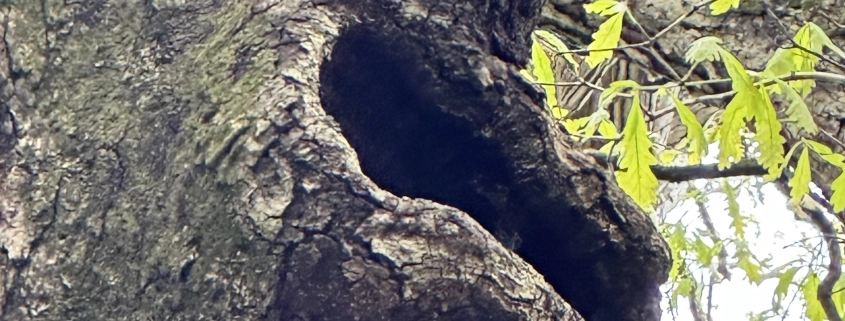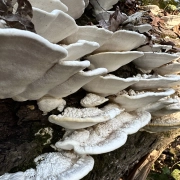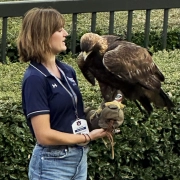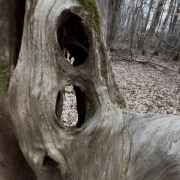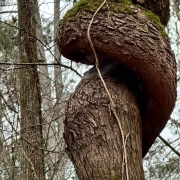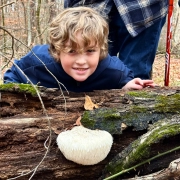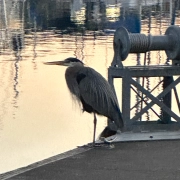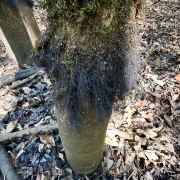Brief-Form Post # 33: Mid-April Tree Form Oddities and Curiosities at Alabama’s Joe Wheeler State Park!
I am pleased to add the 33rd of my GBH Brief Form Posts (Less than five minutes to read!) to my website. I tend to get a bit wordy with my routine Posts. I don’t want my enthusiasm for thoroughness and detail to discourage readers. So I will publish these brief Posts regularly.
On April 17 and 18, 2024, I visited Joe Wheeler State Park for the quarterly meeting of the Alabama State Parks Foundation. Rather than present a single long Post from my wanderings during my free time, please look for four separate photo essays:
- Reading evidence of past land use in the current 80-90-year-old forests
- Tree form oddities and related curiosities — this Post
- Lakeside forest panoply
- Dawn from the Lodge docks
Tree Form Curiosities and Oddities
I arrived early enough on April 17, to saunter three miles on the Awesome Trail, departing from and returning to the boat landing parking lot. I employ the term saunter to emphasize the deliberate, observant pace I choose, electing to walk in Nature rather than dashing through her wildness. My intent is to look, see, and feel her beauty, magic, awe, and inspiration.
The coarse, tortured crown of the white oak near a bird blind caught my eye, drawing me closer.
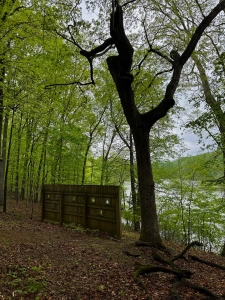
A long-ago snapped branch on the right fork left a gaping mouth, where the tree is attempting and failing to callous over the old wound. Pursed lips seem to speak to those who saunter with eyes wide open, finding the visual gifts in plain sight. A hiker hellbent on covering the distance from the boat landing to the marina will certainly miss the tree shouting to be seen and heard.
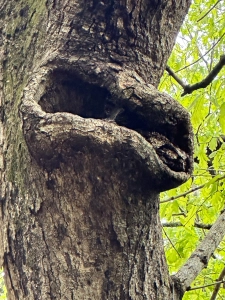
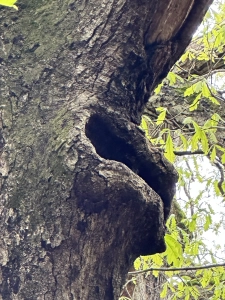
A trailside hickory likewise sported an old branch scar, its “O” mouth callousing in feeble effort to close the wound, which beckons squirrels, birds, and other critters seeking shelter and dens.
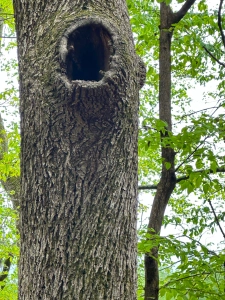
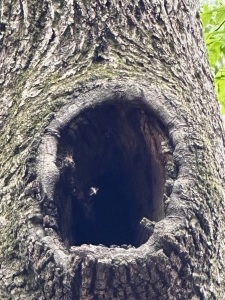
This much smaller hickory peephole appears to be closing, and likely will unless a squirrel or woodpecker can hold the callousing at bay.
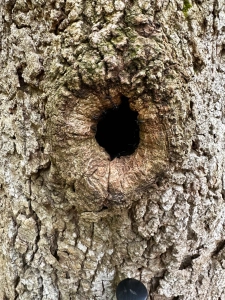
The sugar maple sapling, which is the same age as the oak and hickory overstory, supported a spiraled vine for decades, leaving the permanent imprint of its grasp. The vine is long since deceased and decayed. Sugar maple is shade tolerant and can persist in the under- and mid-story for decades, awaiting a major disturbance to blow down and lay flat the main canopy, exposing the maple to full sunlight and opening a portal to its evolutionarily response and emergence into the upper canopy of the next forest..
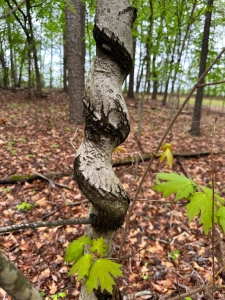
I encountered this mossy mid-canopy hickory, a headless silhouette ready to wrap its branch-arms around some hapless and careless woods-wanderer. I had stayed alert during my saunter and was not startled by its sudden trailside appearance. Pity the poor through-hiker who may have fared less well…but then that person would not have been startled by the unseen mossy forest denizen!
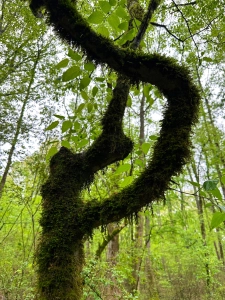
As a former practicing forester in south central Alabama (early to mid 1980s), I used prescribed fire as a forest management tool across thousands of acres. Ever on the alert for signs, I spotted charred bark on the loblolly pine (left) and the hickory. I know our State Park personnel occasionally employ fire, explaining why the Awesome Trail stands are free of extensive ground cover and jungle-like understory.
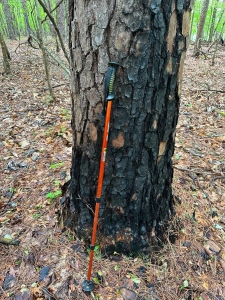
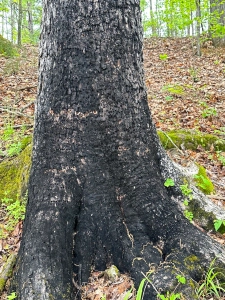
The graffiti-riddled American beech is not a tree form curiosity. Instead, it is an eyesore, a not-so-subtle reminder that human vanity is a powerful and disturbing force, one that brings some visitors to deface a feature of natural beauty that attracts the vast majority of us to Nature. The same can be said of those who discard candy wrappers, drink bottles, and cigarette butts!
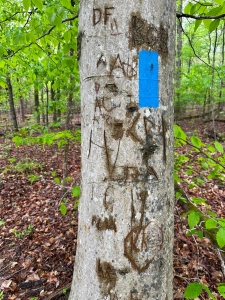
Respectable saunterers and Nature enthusiasts Leave No Trace Behind beyond a footprint or two!
I accept the challenge of distilling these Brief-Form Posts into a single distinct reflection, a task far more elusive than assembling a dozen pithy statements. Today, I borrow a relevant reflection from Henry David Thoreau:
It is a great art to saunter!

